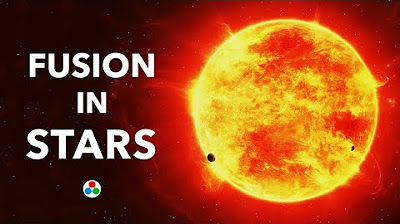HOW A SEISMIC MOVEMENT IS PRODUCED EARTHQUAKE WAVES SEISMOLOGY ANIMATION WELL EXPLAINED
Summary
TLDRThis video explains the movement we feel during an earthquake, which originates from energy released deep within the Earth. It explores the different types of seismic waves—P waves (fastest), S waves (slower), and surface waves (including Love and Rayleigh waves)—and how they affect the Earth’s surface. P and S waves travel through the Earth’s interior, while surface waves cause significant damage by shaking the ground side-to-side or in a circular motion. The combination of Love and Rayleigh waves is responsible for most of the destruction in earthquakes, due to their simultaneous up-and-down and side-to-side motion.
Takeaways
- 😀 Earthquake motion is caused by energy released deep within the Earth.
- 😀 Seismology is the study of earthquakes and the waves they produce.
- 😀 Earthquakes occur when rocks underground break or slip along faults.
- 😀 The focus of an earthquake is the point where energy is released deep underground.
- 😀 Energy from an earthquake radiates outward in the form of body waves.
- 😀 P waves (Primary waves) are the fastest type of body waves, traveling at 4-7 km/s.
- 😀 P waves compress and expand rock materials in the direction of wave travel, similar to waves in a spring.
- 😀 S waves (Secondary waves) are slower, traveling at 2-5 km/s, and cause rock to move up, down, or side-to-side.
- 😀 S waves are like waves traveling along a rope, moving a section of the rope up and down.
- 😀 Surface waves radiate outward from the epicenter, causing slower, more destructive shaking at 2-3 km/s.
- 😀 Love waves move side-to-side and can cause damage to roads and pipes, while Raleigh waves move in circular patterns, knocking buildings off foundations.
Q & A
What causes the motion felt on the Earth's surface during an earthquake?
-The motion felt on the Earth's surface during an earthquake is caused by energy released deep within the Earth, which is transmitted to the surface by seismic waves.
What is seismology?
-Seismology is the study of earthquakes and the seismic waves that travel through the Earth.
What happens when rocks underground break or slip along a fault?
-When rocks break or slip along a fault, the stored energy is released, causing an earthquake.
What is the focus of an earthquake?
-The focus of an earthquake is the point deep within the Earth where the energy is first released, originating the seismic waves.
How are P waves different from S waves?
-P waves (Primary waves) are faster, traveling at 4 to 7 kilometers per second and move by compressing and expanding the material in the direction of the wave. S waves (Secondary waves) travel slower, at 2 to 5 kilometers per second, and cause the ground to move up-and-down or side-to-side perpendicular to the wave's direction.
What type of wave is a P wave similar to?
-A P wave is similar to a wave traveling through a spring, where the coils compress and expand in the direction the wave is traveling.
What is a characteristic of S waves?
-S waves are shear waves that move the ground in a perpendicular direction to the wave's travel, causing up-and-down or side-to-side motion.
What are surface waves and where do they radiate from?
-Surface waves radiate outward from the earthquake's epicenter, which is the point on the Earth's surface closest to the focus.
How fast do surface waves travel compared to body waves?
-Surface waves are slower than body waves, traveling at speeds of 2 to 3 kilometers per second.
What types of damage can surface waves cause during an earthquake?
-Surface waves can cause significant damage by changing the Earth's surface and damaging buildings, roads, and infrastructure. Love waves can break roads and pipes, while Rayleigh waves can knock buildings off their foundations.
Outlines

This section is available to paid users only. Please upgrade to access this part.
Upgrade NowMindmap

This section is available to paid users only. Please upgrade to access this part.
Upgrade NowKeywords

This section is available to paid users only. Please upgrade to access this part.
Upgrade NowHighlights

This section is available to paid users only. Please upgrade to access this part.
Upgrade NowTranscripts

This section is available to paid users only. Please upgrade to access this part.
Upgrade Now5.0 / 5 (0 votes)





